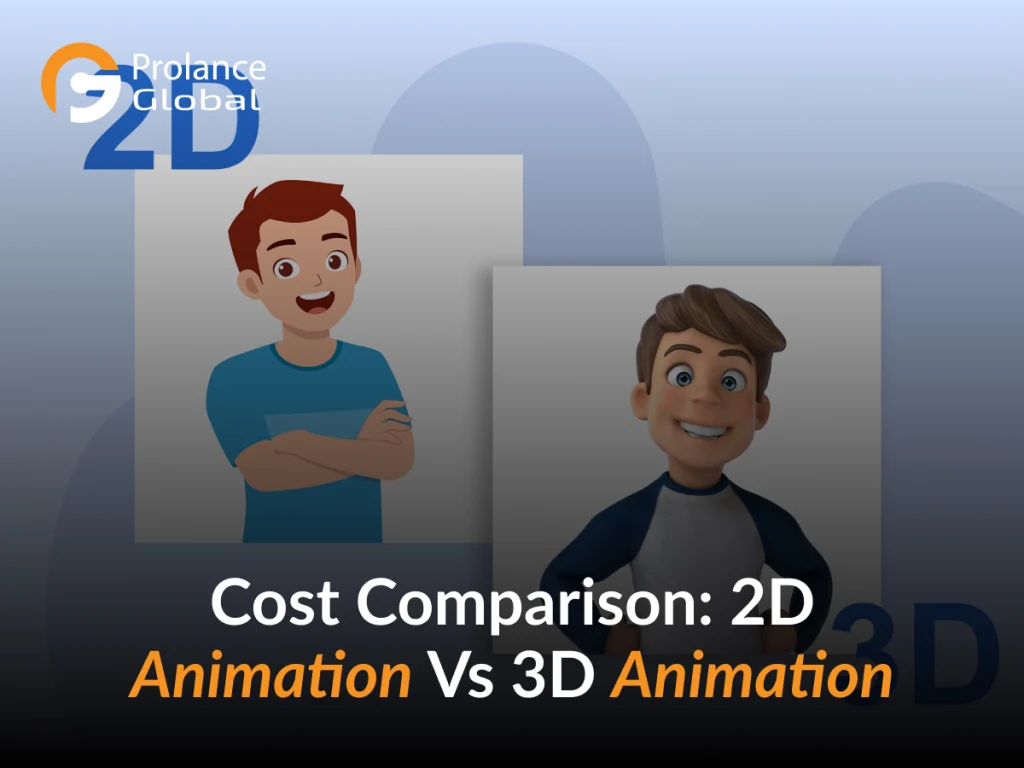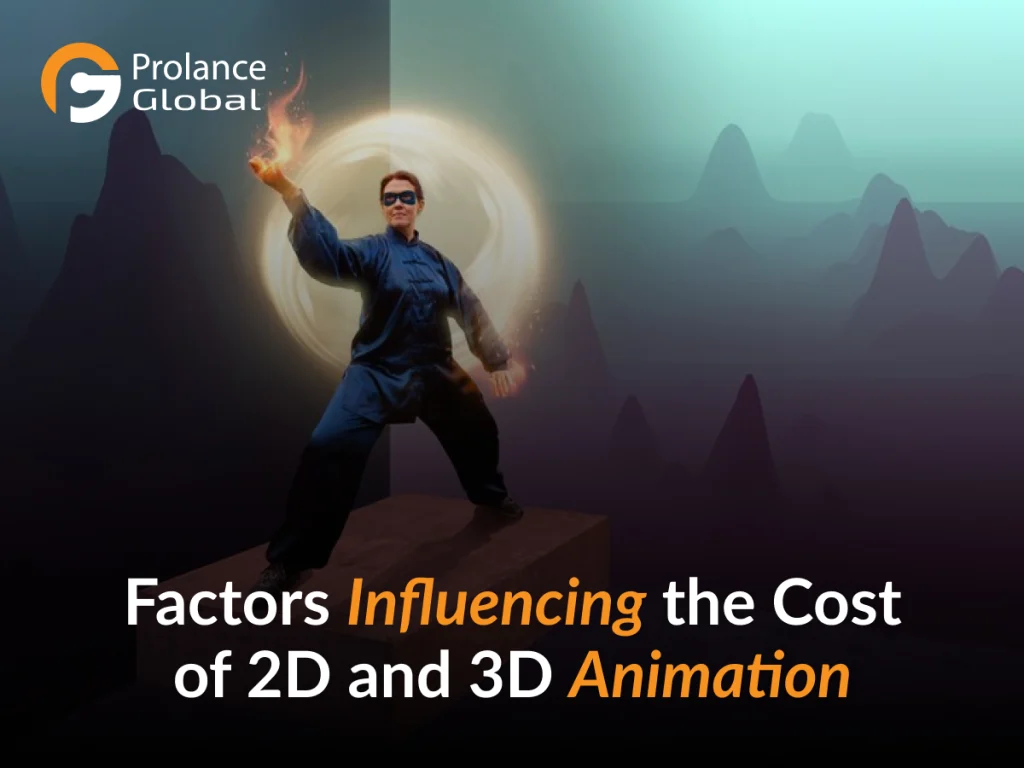Have you ever wondered why some animations have a more moderate price tag while others seem to break the bank? If you’re deciding between 2d vs 3d animation for your next project, understanding the cost difference is crucial.
Animations are everywhere, from eye-catching ads on social media to stunning visuals in blockbuster movies But when it comes to choosing between 2d vs 3d animations, many people often ask, “How much does it really cost”? If you’re curious about what goes into the pricing of these 2 animation styles, you’re at the right place.
Let’s break down them, so you can make the best choice for your project.
What is 2D Animation?
2D animation means creating characters, backgrounds and scenes with two-dimensional art. Examples include cartoons like Tom and Jerry or The Simpsons.
Pros of 2D Animation
- Produce in a shorter timeline
- 2D animations can also be translated into print and web-based material, using the same images for posters, infographics, business styles, etc.
- 2d animation is cost-effective as compared to the 3d animation. Depending on the style, it still is lower in cost compared to 3D.
Cons of 3D Animation
- 2D animations are quite time-consuming
- They lack the realistic element.
What is 3D Animation?
3D animation creates a sense of depth and realism created by using computer-generated images to create animated scenes in a 3D environment. Examples include Pixar movies or the latest video game graphics.
Pros of 3D Animation
- It creates realistic images and characters but is still cost-effective.
- Creates a huge range of motion and depth.
Cons of 3D Animation
- The software required for 3D animations may be complex and difficult to learn.
- A strong understanding of 3D space is required to create realistic animations.
- It’s difficult to update and modify.
Cost Comparison: 2D Animation Vs 3D Animation

Budget Considerations
- 2D animation is budget-friendly making it a popular choice for explainer videos, cartoons and social media content.
- 3D animation is costlier but it offers a high level of realism and details, ideal for products that amaze the audience.
Project Complexity
- For simpler concepts, 2D animations are all that you need.
- If you want to experience more immersive like virtual reality then go for 3D animation.
Timeline And Deadline
- As 2D animations are simpler, they take less time to complete. They are suitable if you have a tight deadline.
- 3D animations require weeks to months depending on the complexity.
Factors Influencing the Cost of 2D and 3D Animation

1. Simplicity Vs Detail
2D Animation:
A simple art style such as flat characters or basic backgrounds will cost less than highly detailed, hand-drawn animations. More complex art will take more time and effort which increases the cost.
3D Animation:
Creating detailed 3D models, textures and realistic environments requires more time and resources making it more expensive than 2d.
2. Character Design And Development
2D Animation:
The more characters you have, the more drawings and movements need to be animated. If you choose complex characters with unique designs then it will increase the cost.
3D Animation:
For 3D, characters need to be modeled rigged and textured. Advanced rigs for facial expressions and realistic movements increase the time and the cost.
3. Background And Environment Design
2D Animation:
Simple, static backgrounds are cheaper while dynamic and detailed backgrounds add to the budget.
3D Animation:
3D environments take longer to build, especially with realistic lightening and texture.
4. Rendering Time And Quality
2D Animation:
It has a quick rendering time because it deals with flat images. However, detailed scenes can take longer.
3D Animation:
In 3D animations, quality renders can take hours or even days for just a few seconds of footage.
5. Storyboarding And Concept Development
A carefully planned storyboard is very important for smooth production. This phase requires you to invest a lot of time but you may have to make a few changes afterwhichd and can add up to the cost later on. There are also other critical steps like script writing, storyboarding and concept design are critical steps that can require additional creative talent and impact the overall budget.
6. Voiceover And Sound Effects
Voiceover and sound effects can also add up to the cost adding a professional voiceover, sound effects and background music can enhance the quality of your animation but also adds to the cost. This includes hiring voice artists, sound engineers and licensing music.
7. Post-Production And Editing
When the animation is complete, it goes through a post-production process that involves many stages like editing, special effects, color correction and the final touches. This process can take a lot of time.
8. Revisions and Modifications
Your output may require some revisions and modifications that may increase the cost. If you have some extensive charges after seeing the initial draft, this can lead to additional charges.
9. Experience And Skill Level of the Animation Team
The expertise of the animators and the reputation studio can significantly increase the price. More experienced teams and renowned studios may charge a premium for their service but they also bring quality and efficiency.
Conclusion
When you are confused in deciding between 2d and 3d animation, know that you have to balance your budget, timeline and project goals. 2D animation is more budget-friendly and quicker to produce, making it ideal for simple explainer videos and social media content. Meanwhile, in 3d animation you wil get high level of realism and detail, perfect for projects that need to captivate audiences with lifelike visuals. Ultimately, consider factors like complexity, character design and post-production needs to choose the animation style that goes best with your vision and feedback.
